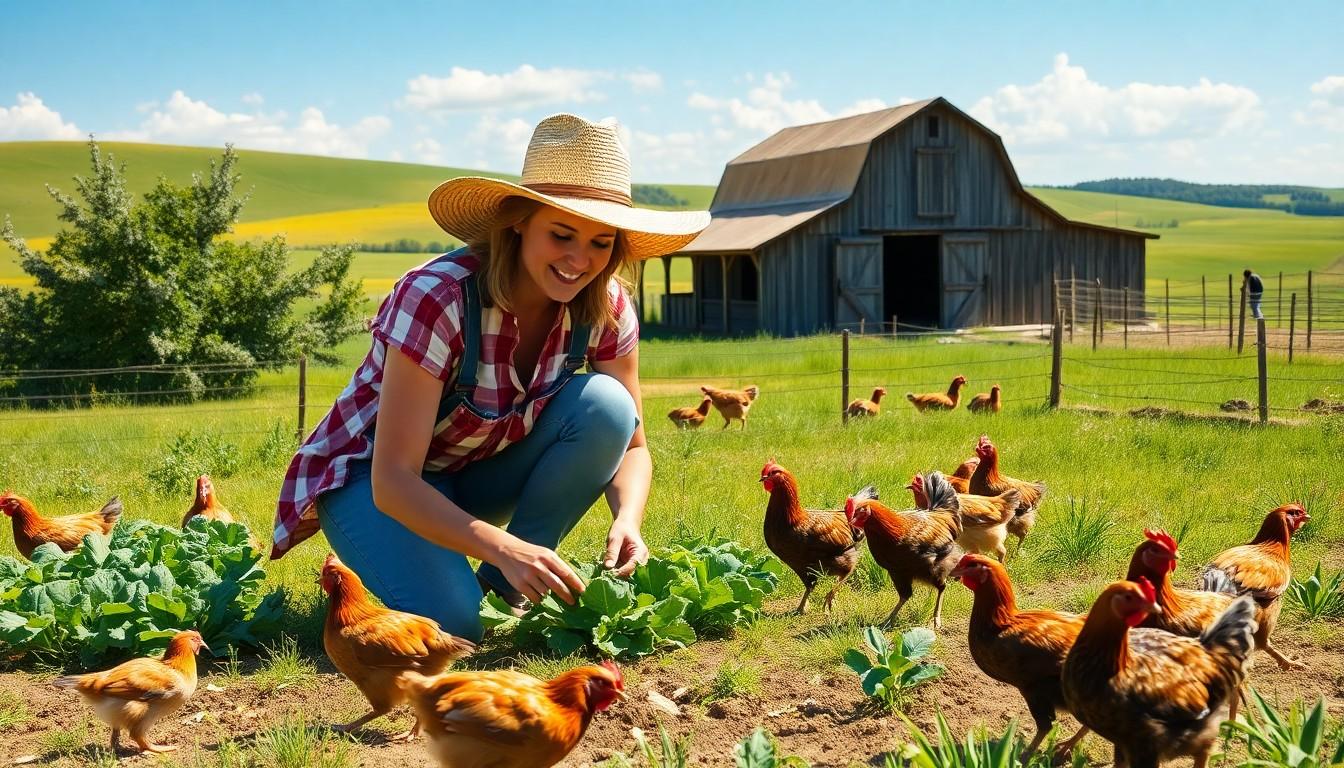The Best Fluffy Pancakes recipe you will fall in love with. Full of tips and tricks to help you make the best pancakes.

In the vast expanse of Texas, where the stars shine brighter and the BBQ is always sizzling, homesteading offers a slice of paradise for those seeking a simpler life. Imagine waking up to the sound of roosters crowing, fresh eggs at your fingertips, and a garden bursting with veggies that didn’t just come from the grocery store. It’s not just a lifestyle; it’s a chance to reclaim your independence while dodging the hustle and bustle of city life.
Homesteads in Texas are more than just plots of land; they’re a canvas for creativity and self-sufficiency. Whether it’s raising goats or mastering the art of canning, the possibilities are as endless as the Texas sky. So grab your boots and get ready to explore how homesteading can transform not just your backyard, but your entire way of living. Who knew that living off the land could be this much fun?
Homesteads in Texas
Homesteading in Texas represents a commitment to self-sufficiency and sustainability. This lifestyle allows individuals to cultivate their land, raise animals, and enjoy a healthier, more fulfilling existence.
Historical Background
Homesteading in Texas dates back to the mid-19th century when the Texas Constitution enabled settlers to claim land. Acts like the Homestead Act of 1862 encouraged migration by offering parcels of land to those willing to farm. Many families seized this opportunity, creating communities centered around agriculture and self-reliance. The heritage of homesteading still influences Texas culture, with traditions passed from generation to generation. Documented cases show that homesteaders faced challenges, including harsh weather and isolation, yet their determination forged resilient rural lifestyles.
Modern Relevance
Today’s homesteads in Texas attract individuals pursuing sustainable living and organic farming. The growing interest in locally sourced food drives many to start their homesteading journey. Resources abound, including workshops on gardening, livestock management, and permaculture practices. As concerns about food security and environmental impact rise, homesteading presents a practical response. Many Texans find inspiration in this lifestyle by connecting with local farmers’ markets and community-supported agriculture. The appeal of homesteading lies in its ability to foster independence and promote a deeper relationship with the land.
Types of Homesteads in Texas

Homesteading in Texas encompasses various types, each catering to different lifestyles and goals. Understanding these types helps individuals tailor their homesteading journey to fit their personal values and preferences.
Traditional Homesteads
Traditional homesteads often include larger plots of land, focusing on farming and livestock. Families grow a variety of crops, such as vegetables and grains, while raising animals like chickens, goats, and cows. These homesteads enhance self-sufficiency, promoting a direct connection between the land and its inhabitants. Many traditional homesteaders also practice skills like canning and preserving to make the most of their harvests. Local communities often share knowledge, hosting gatherings to discuss techniques and resources.
Sustainable Homesteads
Sustainable homesteads prioritize ecological balance and resource conservation. These homesteaders integrate practices like permaculture, emphasizing biodiversity and soil health. Many utilize solar panels and rainwater harvesting systems to reduce their environmental impact. Gardening techniques such as companion planting boost productivity while minimizing harmful pesticide use. Individuals in sustainable homesteads often participate in local farmers’ markets, fostering a community focused on preserving natural resources and supporting local economies. Engaging with the land in a sustainable manner cultivates long-lasting resilience and harmony.
Benefits of Homesteading in Texas
Homesteading in Texas offers numerous benefits that attract individuals seeking independence and a sustainable lifestyle. Embracing this way of life allows for both economic growth and a fulfilling lifestyle.
Economic Advantages
Cost savings often top the list of economic advantages. By growing food and raising livestock, homesteaders significantly reduce grocery expenses. Selling surplus produce and animals can generate additional income, fostering financial autonomy. Property values tend to appreciate, especially in rural areas, making homesteading a smart investment. Tax incentives exist for agricultural activities, providing further financial relief. Access to public programs supporting sustainable farming aids in expenses like equipment and resources. Overall, the potential for long-term economic stability is considerable.
Lifestyle Benefits
Homesteading enhances quality of life through connection to nature. Fresh air, open spaces, and an emphasis on outdoor activities promote physical health. Individuals often experience a sense of accomplishment from growing their own food and raising animals. This lifestyle fosters self-reliance and resilience, equipping people with practical skills. Community engagement flourishes as homesteaders share resources, ideas, and support, creating strong bonds. A slower pace of life encourages mindfulness and reduces stress, contributing to overall well-being. The lifestyle nurtures creativity and innovation, allowing exploration of diverse farming and crafting practices.
Challenges of Homesteading in Texas
Homesteading in Texas presents several challenges that prospective homesteaders should acknowledge. Understanding these obstacles is key to successful land cultivation and self-sufficient living.
Environmental Factors
Environmental factors significantly impact homesteading endeavors in Texas. Severe droughts occur frequently, making water conservation essential for crop survival. High temperatures during summer months create stress on plants and livestock. Soil quality varies across regions, requiring comprehensive testing for nutrient deficiencies. Pests and diseases also threaten both plants and animals, demanding proactive management strategies. Adapting to changing weather patterns remains critical for long-term sustainability. Homesteaders must develop resilience against these environmental uncertainties.
Legal and Regulatory Issues
Legal and regulatory issues present another layer of complexity in Texas homesteading. Zoning laws can restrict agricultural activities and livestock ownership, especially in suburban areas. Obtaining permits for structures or irrigation systems often adds to the bureaucratic hurdles. Individuals must navigate state and local regulations, which can change frequently. Property taxes may increase with improvements, impacting financial planning. Additionally, understanding land rights and easements is crucial when purchasing property. It’s vital for homesteaders to stay informed about these legal considerations for successful land management.
Growing Interest in Sustainable Living
Homesteading in Texas represents more than just a lifestyle choice; it’s a journey toward self-sufficiency and deeper connections with nature. As individuals embrace the opportunities of cultivating their land and raising livestock, they also find a sense of community and shared purpose.
Despite the challenges that come with this way of life, the rewards of improved well-being and economic benefits make it an appealing option. With the growing interest in sustainable living, Texas homesteaders are carving out their paths, contributing to a vibrant culture rooted in resilience and creativity.
Choosing to homestead is a commitment to a healthier, more fulfilling life that resonates with many seeking simplicity and independence.
